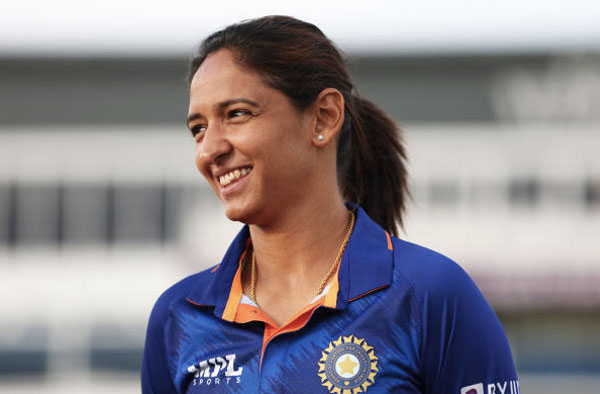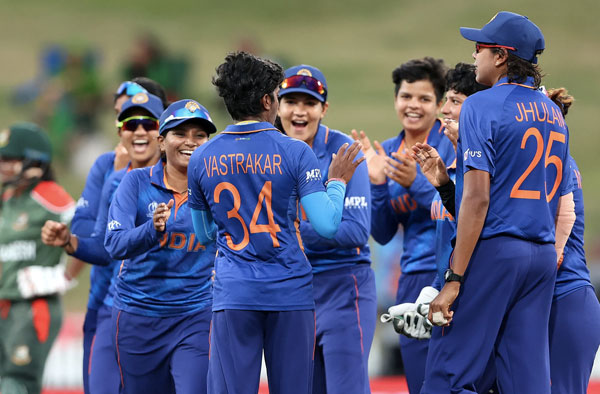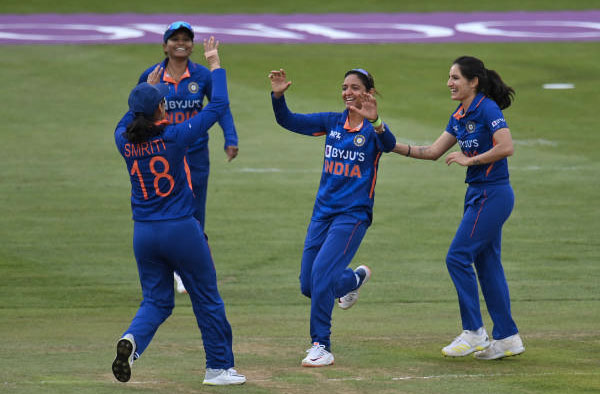The Board of Control for Cricket in India (BCCI) to tackle gender pay discrimination in cricket followed New Zealand Cricket’s landmark decision of “Equal Pay for Equal Work”. Like India’s all-format skipper, Harmanpreet Kaur called it, the 27th of October was truly a red-letter day for women’s cricket in India.

The adoption of the Pay Equity Policy will see BCCI’s female contracted players now earn ₹15 Lakh for a Test game compared to their previous pay of just ₹4 Lakh. In One-Day Internationals (ODI’s) and Twenty20 Internationals (T20I’s) where the players previously were paid ₹1 Lakh for each outing, now will receive ₹6 Lakh and ₹3 Lakh respectively which is the same amount their male counterparts take home after respective outings.
Women’s cricket in India as an industry began to gain popularity after the team’s agonizing exit during the 2017 ODI World Cup. The moment was a turning point that got Indians behind their women’s team who from there on didn’t win any ICC event, but managed to build an unparallel fan base on the back of a string of stunning performances in multi-team events and bilateral cricket.

The rocketing pace at which women’s cricket since 2017 began to boom, murmur’s in 2020 began towards ‘why aren’t female cricketers paid the same as their male counterparts.’ Rightly, with time, the murmur gained pace and voices were loud by 2022 when New Zealand Cricket announced “Same Pay for Same Work on Same Day” for its centrally contracted male and female Cricketers.
Now that the BCCI has taken the first big step towards closing out the pay difference in male and female cricket, the wider picture where both genders take home the same sum at the end of a month or year is still far from achieved. The difference in the count of games in a calendar year for male and female cricketers is a vast one and it’s not like the concern isn’t answered, progress has been made and the introduction of the Future Tour Programme for female cricketers was the first step in the direction promoting the game bilaterally.

Keeping aside the wider picture, in the near future what’s visible for the Indian women’s team is a strong bench strength. Taking up cricket as a profession for women in 2022 too had its own ifs and buts, but not anymore as the progressive call of pay equity, the BCCI office bearers have made is directly going to impact in drawing more girls to take up the game and work towards achieving the honor of playing for the county and at the same time have a very secure financial backing.
The BCCI confirming the inception of the Women’s Indian Premier League is just another step in the direction leading to a strong future. The raw talent that’ll come out from a well-constructed domestic system will be furnished during the tournament and the feeder will help draw out the best in the business for a squad that will then have healthy competition for a spot in the XI.
The Indian team at the moment too have got a decent bunch of girls warming the benches, but the development of the game from raw to international level is something that with more game time will be solved and the answer to the same is the Women’s IPL. With a decent bench strength now, it shouldn’t be surprising if within the next couple or a maximum of 3 years India gets started on their road to domination where they don’t fall just short on big days.
Women’s cricket in India now has got everything it could have asked for and undoubtedly the players realizing the same will know they’ve got a challenge in living up to the raised standards.